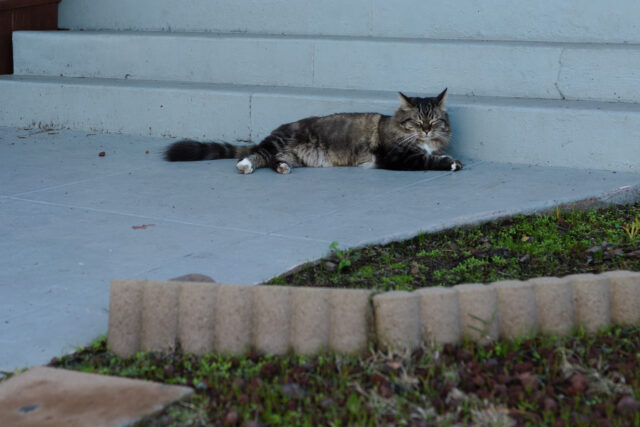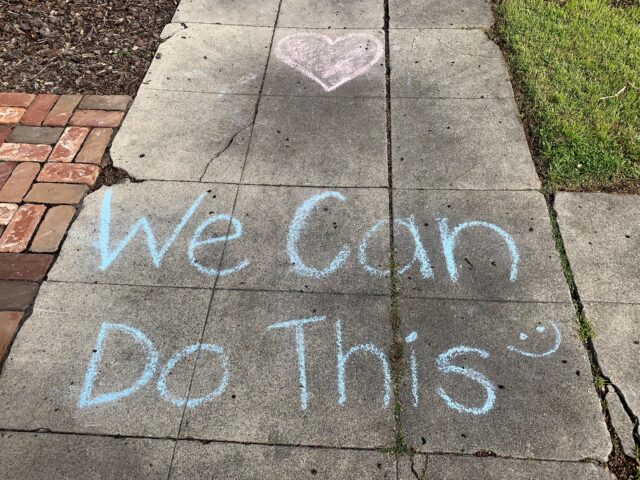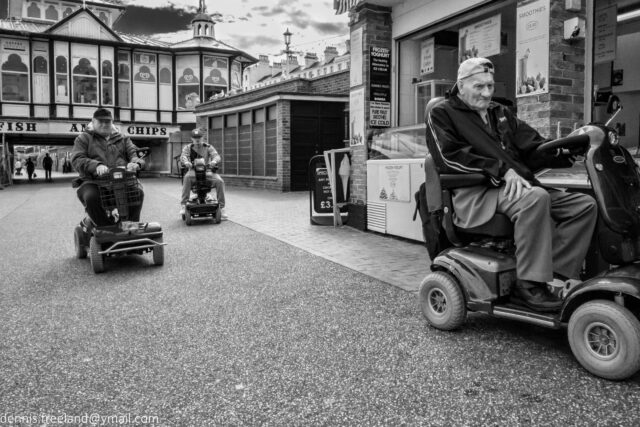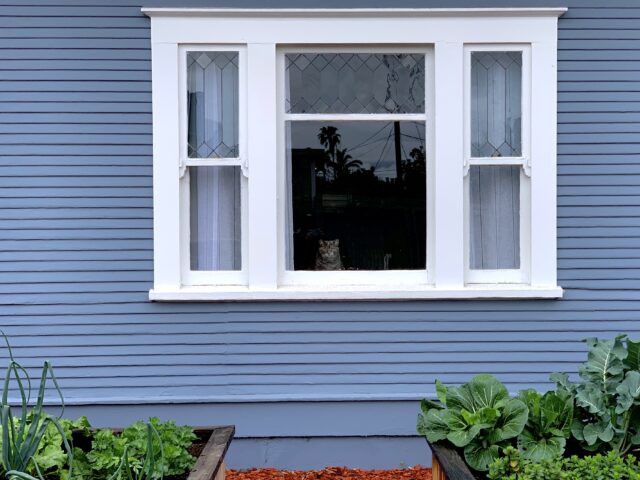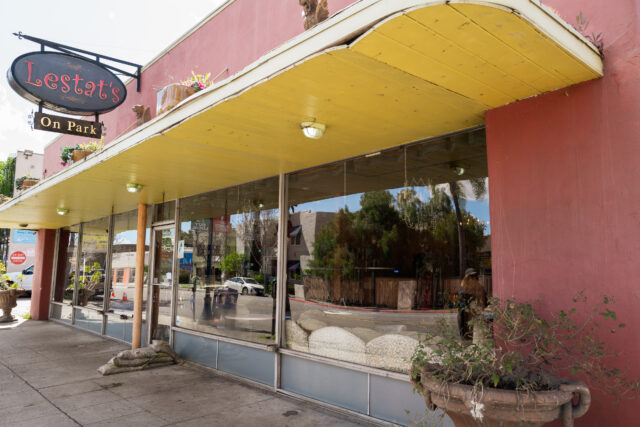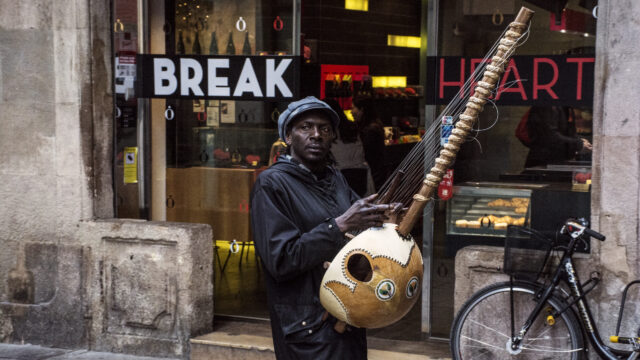As my wife and I walked along Monroe today, a voice called from behind: “Hey, there’s something I have to tell you about Bruce“—not an exact quote but the gist is right. She approached, with her dog leashed and the tabby trotting behind. He was profiled for my “Cats of University Heights” series in May 2017.
Three days ago, someone came pounding frantically on her door, agitated: “Something happened to Bruce”. The tiger tabby likes to hang out and watch the kids at a nearby daycare, and he had stretched out on the sidewalk waiting for them to come outdoors to play. They didn’t, as the place is temporarily closed—along with most other businesses in the city because of state and county orders that everyone should “stay at home” as a means of slowing spread of SARS-CoV-2 (severe acute respiratory syndrome Coronavirus 2), better known as COVID-19.
